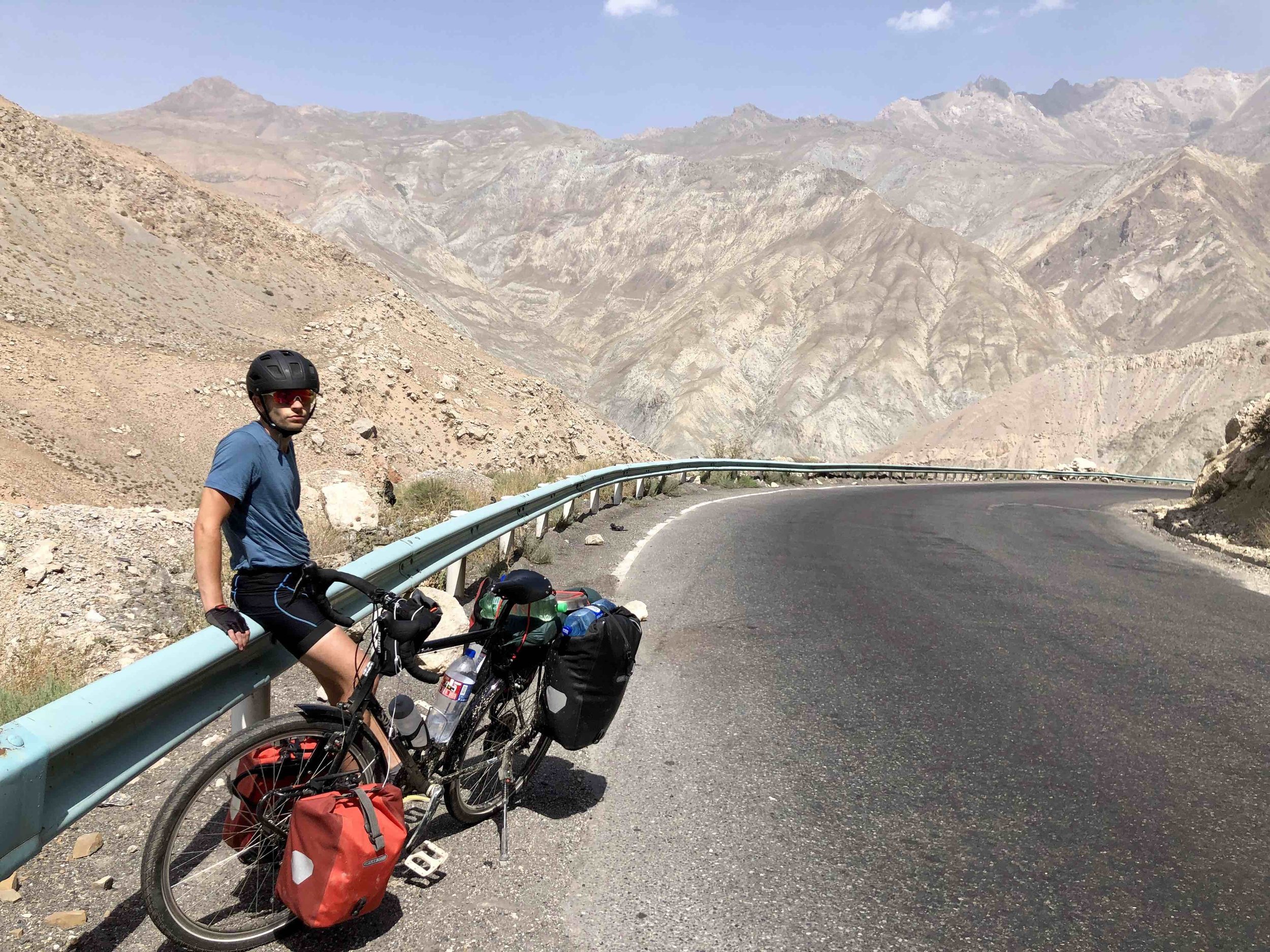Unrelated to the Tunnel of Death but this was our campsite that evening, and the high speed donkey-riding locals
In hindsight, the friendly man’s warning could not have been clearer.
He made an arch with his hands then covered his eyes.
He pointed to a floodlight overhead then made a cross with his arms.
He even drew us a picture in the dust – an arch, with a line snaking up to it.
But despite his efforts we pushed off from his shady spot under a tree, thanking him for what we thought was his message - that it was only 5km to the top of the pass.
He actually meant we were approaching a 5km-long damp, dark, unventilated tunnel that’s classed as one of the most dangerous in the world.
About halfway to the top of Anzob Pass, which sits at 2700m. Approx. nine oreos consumed each.
Ominously dubbed the “tunnel of death”, the Anzob Tunnel was built to help travellers reach the capital without crossing the perilous Anzob Pass, which is prone to year-round avalanches. Warnings online read “good luck getting out alive” and call it a “hellish underworld.”
A soldier stationed near the entrance asked us if we had lights.
We looked at each other and nodded slowly… We did… But surely he didn’t mean we should ride through there?
The tunnel’s mouth belched menacing black fumes.
I figured we’d either suffocate or be flattened by one of the lorries carrying gravel that took the tunnel at full speed.
We knew it was common for cyclists to hitch a ride so we waited for someone to help us, and it came in the form of a guy in a 4WD with roof racks.
Our saviour
Within minutes our panniers were off and in the back, our bikes lashed to the roof and we were heading into the darkness.
Once inside it was clear this was no place for cyclists, and not really much of a place for any vehicle. The tunnel is narrow with unmarked drainage channels creating an obstacle course for drivers who were barely adhering to the two-lane system in their efforts to dodge them.
It was a great relief to emerge to a panoramic view of the Fan mountain range, where an old man with one tooth held my bike for me as a I reattached my panniers. We tried to pay our driver but he wouldn’t accept anything, while the toothless man hooted, “this is Tajikistan!" - implying that in this country people don’t need payment to do nice things for others.
PHOTO: JACK EWING
What followed was an incredibly heart-in-mouth downhill of about 20km, dodging loose gravel and roadworks, erratic driving and at least 20 more tunnels of varying lengths. Jack shot into the first one ahead of me and I blindly followed, realising once inside that its bend meant utter darkness for about 200m - akin to cycling with a blindfold. Fortunately we didn’t hit any potholes and all the other tunnels were short enough to cope with a headtorch.
Upon arrival at our campsite our faces were coated in grime - a combination of dust and exhaust fumes.
After a week’s riding on Tajik roads I’ve decided the tolerance for cyclists is much higher than at home in New Zealand.
Of course there are motorists who’ll buzz past with centimetres to spare leaving you shouting profanities at their exhaust, but from my experience there is much more of that behaviour at home.
Here, the majority of drivers bellow a greeting out the window or honk at us joyfully - a habit which can get tiresome after a long day but is at least well-intentioned.
We may not have tunnels of death at home but we do have a pattern of behaviour from motorists which can feel very death-inducing, and that needs to change.
The Fan Mountains north of Dushanbe






